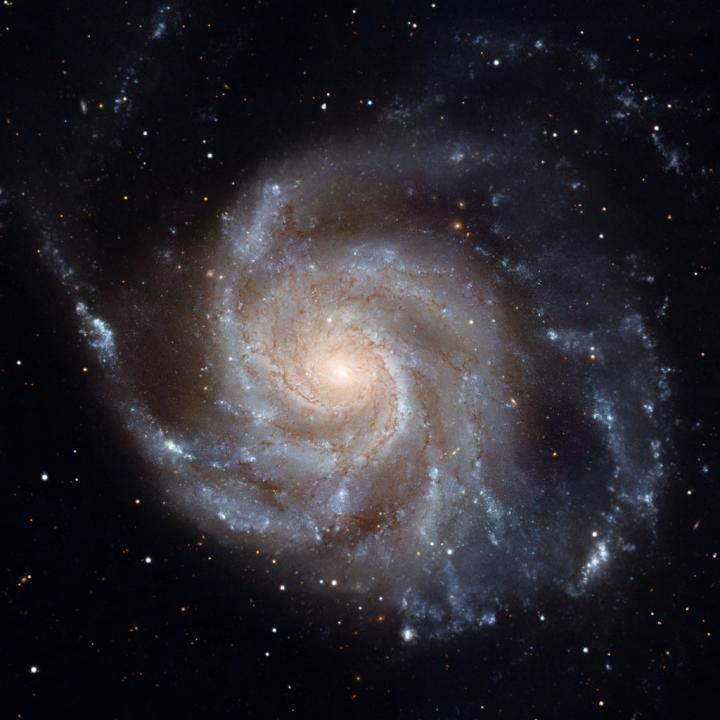Reviewed by Alex SmithJul 20 2021
According to astronomers, black holes with masses equivalent to nearly millions of suns hamper the origin of new stars.
 An image of Messier 101, the Pinwheel Galaxy, made with the Hubble Space Telescope. The bright blue clumps in the spiral arms are sites of recent star formation. Image Credit: NASA, ESA, K. Kuntz (JHU), F. Bresolin (University of Hawaii), J. Trauger (Jet Propulsion Lab), J. Mould (NOAO), Y.-H. Chu (University of Illinois, Urbana), and STScI.
An image of Messier 101, the Pinwheel Galaxy, made with the Hubble Space Telescope. The bright blue clumps in the spiral arms are sites of recent star formation. Image Credit: NASA, ESA, K. Kuntz (JHU), F. Bresolin (University of Hawaii), J. Trauger (Jet Propulsion Lab), J. Mould (NOAO), Y.-H. Chu (University of Illinois, Urbana), and STScI.
A 20-year long debate on the formation of stars was resolved by scientists by employing a machine learning method and three advanced simulations, backing up results from a huge sky survey taken.
Joanna Piotrowska, a PhD student at the University of Cambridge, presents the new study on Tuesday, July 20th, 2021, at the virtual National Astronomy Meeting (NAM 2021).
The formation of stars in galaxies has been a central point of astronomy research for a long time. Several years of successful observations and theoretical modeling offered better insights into how gas collapses to form new stars both in and beyond the Milky Way.
However, all-sky observing programs like the Sloan Digital Sky Survey (SDSS) played a vital role and have enabled astronomers to realize that not all galaxies in the local Universe exhibit active star formation. There prevails a generous population of “quiescent” objects which are responsible for star formation at considerably lower rates.
What causes star formation to cease in galaxies is still the biggest unidentified factor in comprehending the evolution of galaxies and has been debated over the last two decades. Piotrowska and her colleagues configured an experiment to identify what might be the responsible factors.
The astronomers used the three latest cosmological simulations, called IllustrisTNG, Illustris and EAGLE, to analyze what can be predicted to appear in the real Universe as seen by the SDSS when various physical processes were hampering star formation in huge galaxies.
A machine learning algorithm was employed by the astronomers to categorize galaxies into star-forming and quiescent, questioning which among the three parameters — the mass of the supermassive black holes discovered at the focal point of galaxies (these enormous objects have millions or even billions of times the mass of the Sun), the mass of the dark matter halo around galaxies or the total mass of stars in the galaxy — would be best in predicting how galaxies form.
Furthermore, these parameters helped figure out which physical process — energy injection by supermassive black holes, shock heating of gas in massive halos or supernova explosions — forced galaxies into semi-retirement.
The new simulations estimate the supermassive black hole mass as the most significant factor for hampering the formation of stars. The simulation results correspond to the observations of the local Universe, thereby adding weight to the findings of the team.
It’s really exciting to see how the simulations predict exactly what we see in the real Universe. Supermassive black holes—objects with masses equivalent to millions or even billions of Suns— really do have a big effect on their surroundings. These monster objects force their host galaxies into a kind of semi-retirement from star formation.
Joanna Piotrowska, PhD Student, University of Cambridge